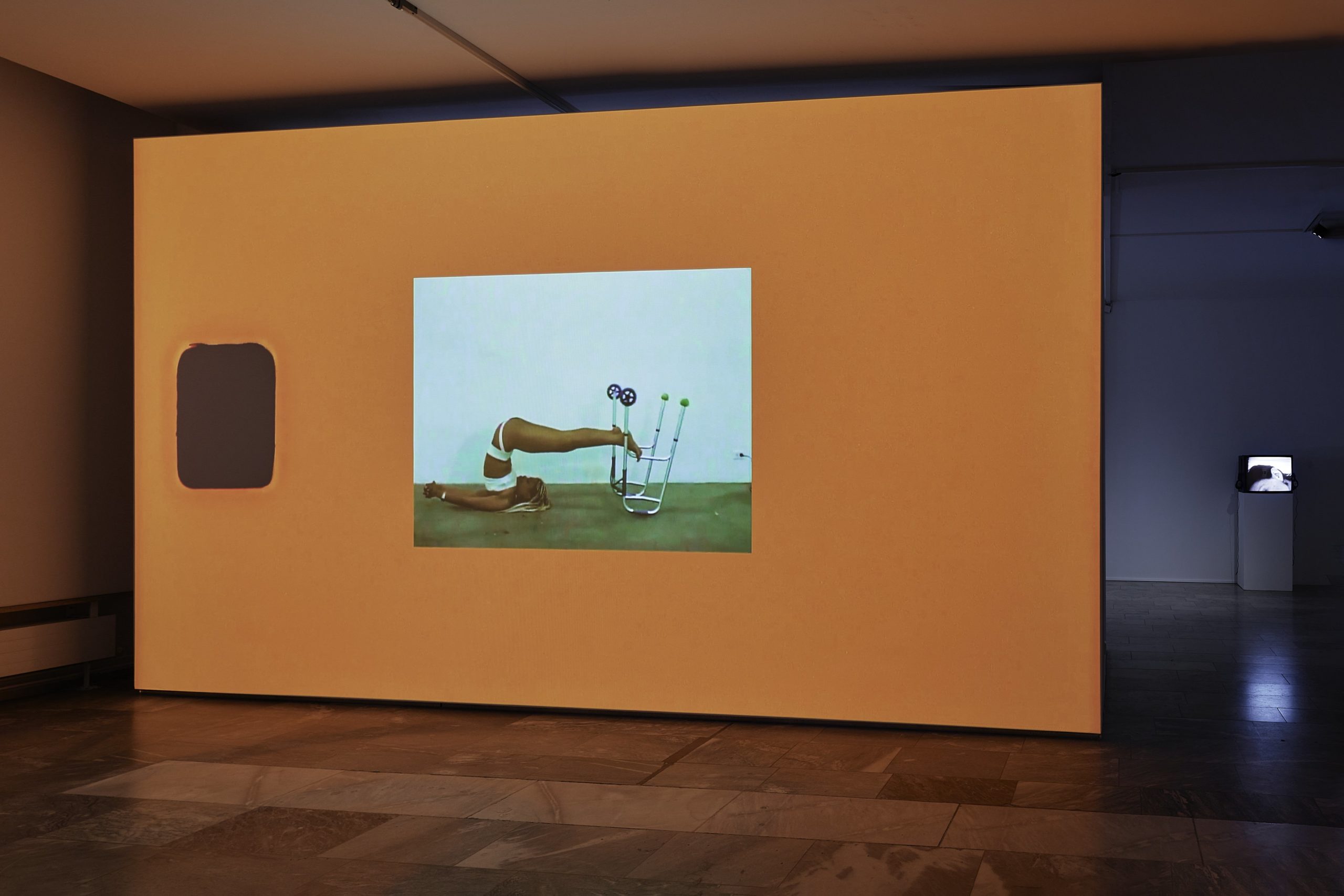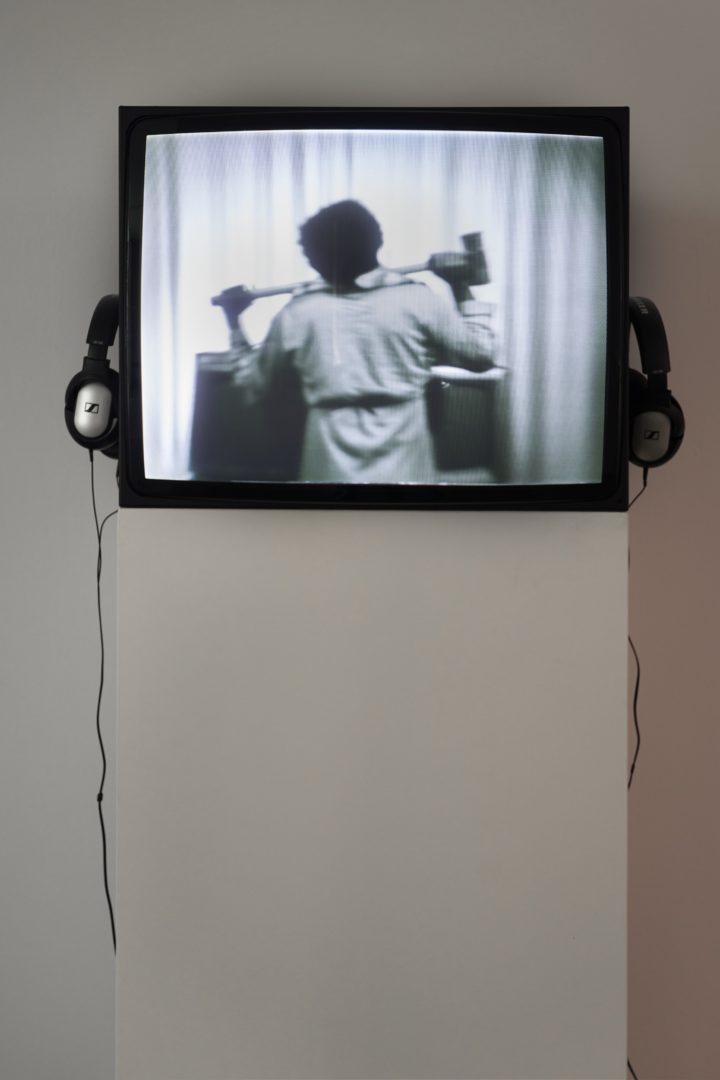Unbound : Performance as Rupture at the Julia Stoschek Foundation, Berlin

Unbound: Performance as Rupture
Julia Stoschek Foundation, Berlin
14 September 2023 – 28 July 2024
Curator: Lisa Long
Assistant Curator: Line Ajan
The exhibition “Unbound: Performance as Rupture” at the Julia Stoschek Foundation in Berlin leads the viewer on a circuit of videos and photographs, alongside several sculptures and installations, exploring the different usages of the human body in performance. Recognizing the sheer volume and length of the works, the foundation offers unique tickets valid for the entire duration of the show, blurring the lines between a traditional exhibition and a dynamic film program or festival experience. This flexibility allows the public to revisit and engage with the pieces repeatedly, fostering both education and convenience.
Proposing the overarching theme of performance, the exhibition casts a wide net, and allows for the liberty to include a larger selection of works. Considering the subject, the body thus becomes the central point of perspective when apprehending the works—from that of the artist or performer to that of the viewer. However, the body can also be conceptualized as the polarity inherent to humans; my body, the other’s body, or my body that I share with the other. A body we identify with or not at all: sick and healthy bodies, white or black, female or male raises questions of similarities or differences between humans. The exhibition leads us to questioning the questions.

The body serves as the foundation for all human performative action and creation. While some works explicitly foreground its central role (such as “Unlearn the Body” by Panteha Abareshi showing the limitations of a disabled body; “As British as a watermelon” by mandla & Graham Clayton-Chance portraying the role and trauma of their body in the context of migration and asylum; and “Shaved (At A Loss)” by Patty Chang uncovering the blinding imposed by the male-driven consumption norms) others explore its social and cultural significance. For example, Howardena Pindell’s depiction of a white face in “Free, White and 21” addresses the double standard hypocrisy in the American society of the 1970’s and 80’ with its continuous racial and cultural discrimination against black people, while Ulysses Jenkins in “Mass of Images” examines the creation of a fallacious broader perception of black individuals in cinema from the beginning of Hollywood, and thus the origin of certain racial stereotypes.
The presence of the camera in the conception of the works is crucial for it removes these bodies from their fixed temporal and spatial contexts. In fact, the exhibition is set about the body in relation to the camera, stepping away from the temporary and perishable aspect of live performance in front of an audience, as well as from its rendering as mere documentation. In essence, the performance is not just captured by the camera but is also performed for the camera. This act becomes a political choice, which transforms, enlarges, and generalizes the concept of the audience into a broader entity, bound neither to time nor space.
Fundamentally, the exhibition takes a critical stance opposing discrimination worldwide, advocating for various causes against injustice, and addressing contemporary issues of inclusivity related to race, sexuality, gender, feminist struggles, physical disabilities, and political activism. While the highly comprehensive approach covering a variety of directions committed to fighting repression is commendable, the number of causes and positions can leave the viewer disoriented. Within the exhibition space, one may find themselves immersed in a discourse that transcends geographic boundaries and aims to surpass the Eurocentric perspective, all the while focusing highly on North American narratives. Whereas highlighting key matters such as BIPOC discrimination in America or the colonial past of other nations, this angle may overlook the relevance of local contexts and omit to address issues specific to the region – social segregation, economic inequality, WW2 resolutions, and current feminist struggles for equality, potentially leaving visitors with a sense of disconnect and helplessness.
The exhibition features a remarkable selection of works by exceptional artists, spanning various generational discourses. It’s truly intellectually satisfying to have the opportunity to view together historical pieces by artists such as Howardena Pindell, Pope L., VALIE EXPORT, Ulysses Jenkins, Patty Chang, and peter campus. Ultimately, the show offers a serious cross-generational exploration of performance and protest, inviting the spectators to engage with many complex themes and perspectives. It evokes the polarity of the oppressor and the oppressed, as well as the camera as its witness, bringing the visitor along as an ally, a voyeur, or an onlooker to the action.

______________________________________________________________________________
Head image : Panteha Abareshi, Unlearn the Body, 2021, Super 8 color negative film transferred to video, 4′55′′, color, sound. Installation view, UNBOUND, JSF Berlin. Photo: Alwin Lay.
- From the issue: 107
- Share: ,
- By the same author: Ho Tzu Nyen, GESTE Paris, The summer of collaboration at CRAC Alsace and CRÉDAC: “L’amitié : ce tremble” and "Tripple Dribble", Jonathan Binet at Balice Hertling gallery, Radek Brousil at Stone Bell House, Prague,
Related articles
Ralph Lemon
by Caroline Ferreira
Ho Tzu Nyen
by Gabriela Anco
Hilma af Klint
by Patrice Joly

